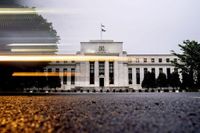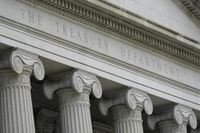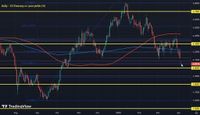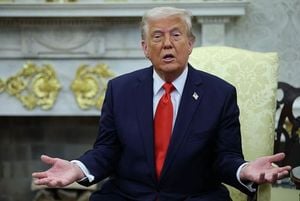The U.S. Treasury yields fell sharply on April 3, 2025, hitting a six-month low as President Donald Trump’s announcement of a "reciprocal tariff" policy raised concerns about a potential global trade war. The 10-year Treasury yield dropped by 11 basis points to 4.085%, while the 2-year yield shed 9.5 basis points to trade at 3.809%. This decline in yields reflects a significant shift in investor sentiment, as a flight to safety away from risk assets became apparent.
Trump's executive order, signed on April 2, 2025, imposes a baseline tariff of 10% on all imports, effective April 5, 2025. The plan includes steep tariffs on over 180 countries and territories, with China facing a staggering 34% tariff, the European Union 20%, and Vietnam 46%. During a press conference in the White House Rose Garden, Trump claimed, "We will charge them approximately half of what they are and have been charging us." He added that the tariffs would encompass the combined rate of all foreign tariffs, non-monetary barriers, and other forms of cheating.
The market's reaction to the tariff announcement was immediate and dramatic. As bond traders adjusted their expectations, the yield on the benchmark 10-year Treasury note fell to 4.08%, its lowest level since mid-October. This decline was part of a broader trend, as traders began to lift bets on interest-rate cuts from the Federal Reserve, anticipating that the economic fallout from the tariffs could lead to a slowdown. Money markets are now pricing in a small chance of the Fed delivering four quarter-point rate cuts this year, a scenario that was not considered just a day earlier.
Mark Haefele, chief investment officer at UBS Global Wealth Management, noted the potential economic repercussions of Trump’s tariff policy. He stated, "Even if tariffs are ultimately reduced by year-end, the near-term shock and associated uncertainty is likely to drive a near-term slowdown in the U.S. economy and reduce full-year 2025 growth to closer to or below 1%." Haefele further projected that the Federal Reserve could implement 75 to 100 basis points of rate cuts over the remainder of the year.
The stark contrast between the current market conditions and those of six months ago is notable. Back in October 2024, traders were optimistic about Trump's presidency and the potential for tariffs to spark inflation. However, the latest developments have shifted concerns toward global growth, overshadowing any inflationary fears. A flight to safety in bonds has been accompanied by heavy selling in equities, as investors grapple with the uncertainties surrounding the new tariff measures.
Moreover, the announcement has reignited fears of a recession, as evidenced by the sharp drop in Treasury yields. As traders increased their bets on the Federal Reserve's rate cuts, the bond market indicated that fear was prevailing. The uncertainty surrounding the tariffs and their economic impact has led to heightened volatility in markets, with analysts warning that liquidity issues may exacerbate market movements in the short term.
In addition to monitoring the effects of the tariffs, investors are also looking ahead to upcoming economic data releases. The ISM Services PMI is set to be released soon, followed by the nonfarm payrolls report on Friday. Federal Reserve Chairman Jerome Powell is scheduled to deliver a speech on Friday, which will be closely watched for insights into the central bank's monetary policy in this uncertain economic climate.
The implications of Trump's tariff policy extend beyond immediate market reactions. The administration's approach to trade has sparked debates about its potential long-term effects on the U.S. economy. As the tariffs take effect, industries reliant on imports may face increased costs, which could ultimately be passed on to consumers. This raises questions about inflation, consumer spending, and overall economic growth.
As the situation continues to unfold, market participants remain on edge, weighing the potential consequences of Trump's aggressive trade stance. The bond market's response, characterized by falling yields and increased bets on rate cuts, underscores the prevailing sentiment of caution among investors. With the Federal Reserve's next moves hanging in the balance, the economic landscape remains fraught with uncertainty.
In summary, the recent developments surrounding President Trump's tariff policy have led to significant shifts in market dynamics, with bond yields falling sharply and traders adjusting their expectations for Federal Reserve rate cuts. The potential for a global trade war has raised concerns about the U.S. economic outlook, prompting a flight to safety in the bond market. As investors await further economic data and insights from the Federal Reserve, the implications of these tariffs will continue to be a focal point for market participants.







